The Chinese white dolphin, a nationally protected first-class wild animal in China, has a population of about 6,000 worldwide. Currently, there are six Chinese white dolphin nature reserves in Guangdong, making the province the most densely distributed area for Chinese white dolphins in China.
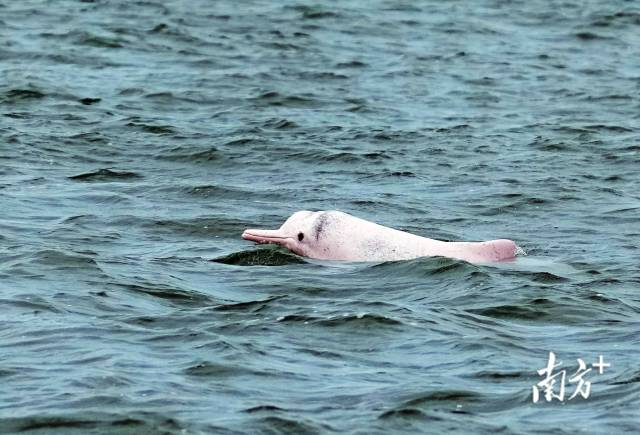
A Chinese white dolphin swimming in Leizhou Bay, Zhanjiang
In Guangdong, there is a group of "friends" of Chinese white dolphins. Despite different ages, occupations, and life experiences, they all have joined the protection of Chinese white dolphins and established deep emotional bonds with them. Their story with the Chinese white dolphin is a microcosm of harmony between people and nature.
Located in a crescent-shaped bay, Guitou Village on East Island in Zhanjiang is called "Dolphin Bay" by the locals, where Chinese white dolphins frequently visit.
Zhuang Hongqing, a villager in Guitou, is very proud of the "Dolphin Bay" next to his home. "I have adored Chinese white dolphins since I was a child," Zhuang Hongqing recalled that when he was a child, he would see white dolphins when he was swimming in the sea near the village.
Having grown up with the company of Chinese white dolphins, Zhuang has long regarded this group of animals as his family. "I think white dolphins can understand and resonate with humans. They are very cute. I have always wanted to do something to protect them."
At the end of 2012, Zhuang Hongqing raised funds to set up a Chinese white dolphin protection base on the seaside, which attracted Chinese white dolphin enthusiasts from all over the country. He also designed several information boards to introduce knowledge of Chinese white dolphins to tourists and called for action to protect the marine ecosystem. "At its peak, there were more than 300 visitors a day," Zhuang said.

Zhuang Hongqing and his wife Lin Jing at the Chinese white dolphin protection base

Zhuang Hongqing standing beside a skeleton of Chinese white dolphin
"Now, when I go out, the villagers call me 'Dolphin Qing' instead of my real name," Zhuang Hongqing said with a smile. He hopes his efforts can attract more people to join in the protection of Chinese white dolphins.
On the wall of Wang Xuefeng's office in the Fisheries Building at Guangdong Ocean University, there is a photo of a pink Chinese white dolphin leaping out of the water, posed in a graceful arc against the sky.
"This photo was taken by my graduate students and me in Leizhou Bay," Wang Xuefeng said. As a professor in the College of Fisheries who focuses on the ecology of fishery resources, he has been studying the fish species eaten by white dolphins for many years and is familiar with the Chinese white dolphins in Zhanjiang.
Wang Xuefeng's obsession with Chinese white dolphins began in 2007 when he encountered a group of them during a research task. "When I saw them for the first time, I felt as if I had flipped over a mermaid." The Chinese white dolphins swimming and jumping joyfully in front of Wang made him "resonate with the rhythm of life."
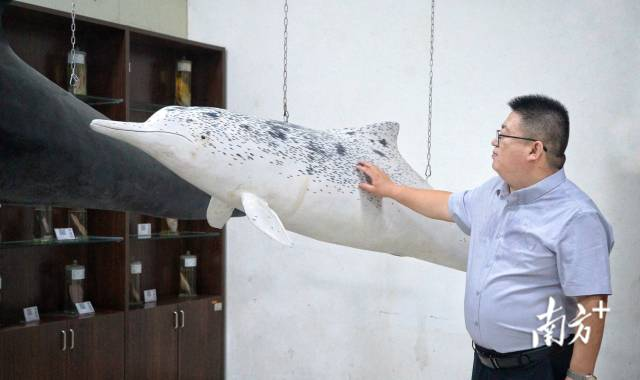
Wang Xuefeng standing beside a Chinese white dolphin sample at the Museum of Aquatic Organisms, Guangdong Ocean University
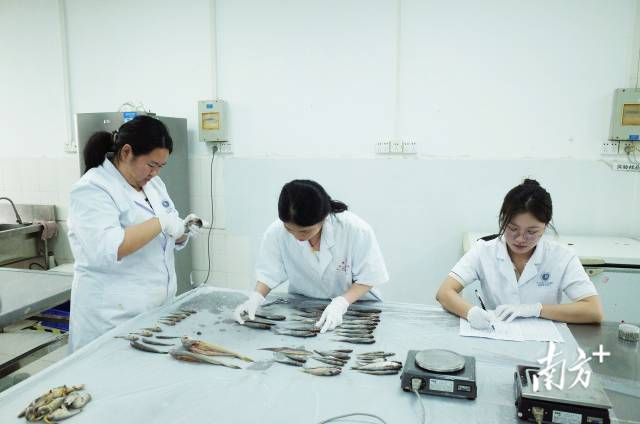
Wang's research team studying the fish species that Chinese white dolphins eat
Since 2017, Wang Xuefeng and his team have been monitoring the Chinese white dolphins in Leizhou Bay. "According to the data collected by our team, the population of Chinese white dolphins in Leizhou Bay has remained stable in recent years and has reproductive potential to a certain degree," Wang Xuefeng said.
He added that his years of research have given him a more profound understanding of the relationship between environmental protection and the economy, "Humans cannot walk alone in the world but coexist with all creatures."
"The history of Chinese white dolphins in Guangdong can be traced back to 31,000 years ago," said Lin Wenzhi, an associate researcher at the Institute of Deep-sea Science and Engineering of the Chinese Academy of Sciences.
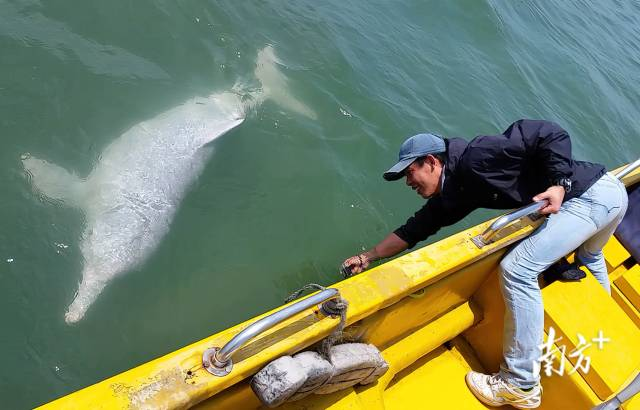
Lin Wenzhi playing with a Chinese white dolphin during research
In Leizhou Bay, almost every local has a story involving the Chinese white dolphins. Wu Huaxiong, a fisherman from East Island, has a story that dated back to his grandfather. His family has been living on East Island for four generations, making a living from the ancient business of fishing. The hundreds of Chinese white dolphins in Leizhou Bay have been their old friends, with whom they have accompanied each other for hundreds of years.
"I don't know whether it is the dolphin family or our family that has lived here longer," Wu said, "but I think Leizhou Bay is home for all of us."
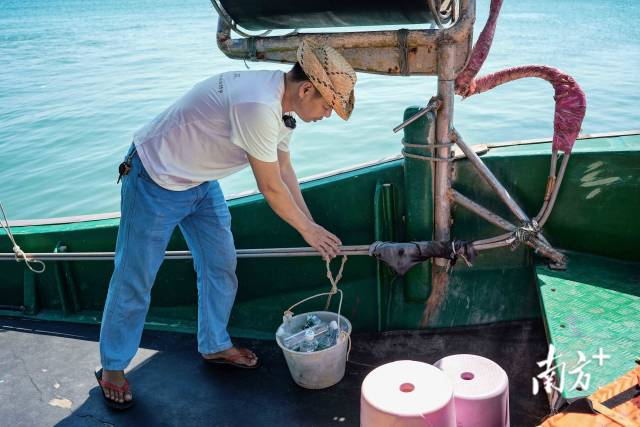
Wu Huaxiong has a garbage bin on his ship to collect plastic bottles so that they would not be thrown into the sea
Reporter | Chen Siyuan, Zhang Di
Editors | Nan, James
Video | Zhou Xinyu, Li Yongzhi, Chen Siyuan
Photos | Nanfang Plus
















